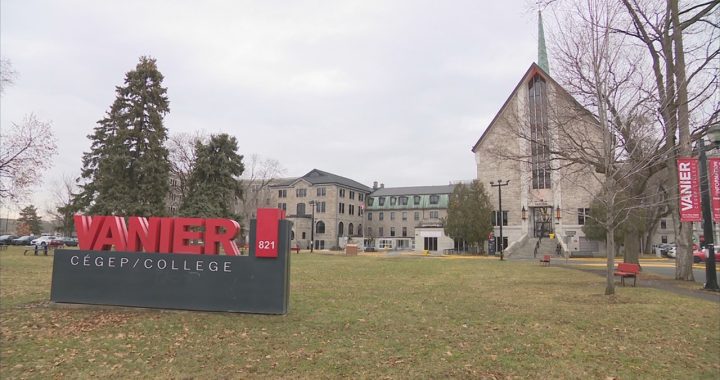Nervousness, sadness, resilience, and anger, all the emotions felt and expressed by a group of 13 residential school survivors and supporters embarking on a seven-day, 275 km trek from the Innu community of Mashteuiatsh to Québec City in time for Pope Francis’ arrival.
For marchers, the starting point is symbolic: Mashteuiatsh is where Quebec’s last residential school, Pointe-Bleue, closed in 1991.
“We wanted to offer an opportunity for people to gather around residential school survivors,” explained Jay Launiere-Mathias, director of Indigenous wellness organization Puamun Meshkenu, who organized and are facilitating the march.
“I think it’s important to remember the reason why the Pope is coming to Canada – it’s to apologize.”
“I expect the church to make a commitment to repair the wrongs that it has contributed to, and to initiate a process with First Nations to see how it could achieve that step,” Gilbert Dominique, Chief of Mashteuiatsh, told APTN News.
Among the group of 13 survivors are representatives of the Anishinaabe, Atikamekw, Innu, Naskapi, and Wendat nations.
Chantal Niquay, an Atikamekw survivor of the Pointe-Bleue Residential school, said the Pope’s expected apology is a step in the right direction.
“I’m thinking of my father – and I’m thinking of myself because I carry this with me [too.] And I want to be freed from it. Break the chain, as they say, for the future,” Niquay explained.
Thérèse “Telesh” Bégin, an Innu survivor, said the pope’s visit to Canada is a critical part of her personal healing journey.
“We are proud of our Holy Father who is coming here for Indigenous people – and all nations too,” Begin said, eyes full of tears.
Départ à Mashteuiatsh…Pleins d’émotions de la part des marcheurs de Puamun Meshkenu, Anishnabe, Atikamekw, Innu et Wendat, en direction des Plaines d’Abraham pour souligner leur solidarité aux survivants des pensionnats en cette période d’excuses du Pape pic.twitter.com/qNPEkL7HkN
— Shushan Bacon (@ShushanBacon) July 21, 2022
Innu surgeon Dr. Stanley Vollant, also president of Puamun Meshkenu, said you don’t need a medical degree to acknowledge the physical challenges of this undertaking.
“Walking for that long in the heat is physically difficult. It can be difficult on the feet,” Vollant said. “That pain – it’s representative of what we’ve all endured for the last 500 years.”
Alexandre Dumais-Dube, Anishinaabe from Kitigan Zibi, said he was “apprehensive” about the journey, but is finding motivation in the strength of children who made it through their time in residential school.
“I feel like I carry something with me that I can’t name. I’m thinking of my aunt, Jacqueline. She’s the only one of my grandmother’s siblings who survived residential school. She’s still alive today, and attended the school in Mashteuiatsh,” Dumais-Dube said.
“I’m thinking of her, but also of my grandmother. I’m thinking of my whole family or anyone who’s still living with intergenerational trauma.”
The group is expected to arrive in Wendake, just outside Québec City, on July 26 – where commemoration, ceremony, and prayer for the visit will begin.
The next day, they will proceed to the Plains of Abraham along with thousands of other spectators hoping to catch a live stream of the Pope’s address.
“In the committees, we took part in, the common preoccupation among Indigenous peoples was that the Plains of Abraham would become like festival grounds – just a show, you know?” Launiere-Mathias added.
“We want it to be an opportunity to put our spirituality forward.”
Fast facts about the Quebec leg of the Papal visit
In Quebec, the Papal visit is proving to be a hot-ticket event.
Thousands of free passes to Pope Francis’ mass at Sainte-Anne-de-Beaupre basilica northeast of Québec City were scooped up in just two minutes according to event organizers.
Those with tickets in hand can expect an early start on the morning of July 28 – cars will not be permitted on-site, so prospective attendees will have to line up for the two shuttles running to the basilica.
At a briefing last week, Jasmin Lemieux-Lefebvre, a spokesman for the visit and liaison with the Indigenous communities in Quebec, said he wondered if asking residential school survivors, many of whom are elders, to arrive early for shuttles was excessive.
“I didn’t know if it was too much to ask,” Lemieux-Lefebvre said, adding he’s now convinced the plan is the best one. “We’ve done the maximum to find the right balance between security and a decent, important welcome for all the survivors of Indigenous residential schools.”
About 1,600 people will be permitted inside the shrine for the event, with about 10,000 on the grounds watching on big screens.
Despite initial concerns about the number of survivors invited to participate, organizers repeatedly assured that 70 per cent of tickets are reserved for Indigenous communities, while 2,000 tickets were issued for the general public.
According to Lemieux-Lefebvre, psychological support services will be offered for Indigenous participants.
The Pope’s public address will be translated into a dozen Indigenous languages.
Click here for more: Road to Truth: The Pope’s Visit
With files from The Canadian Press










